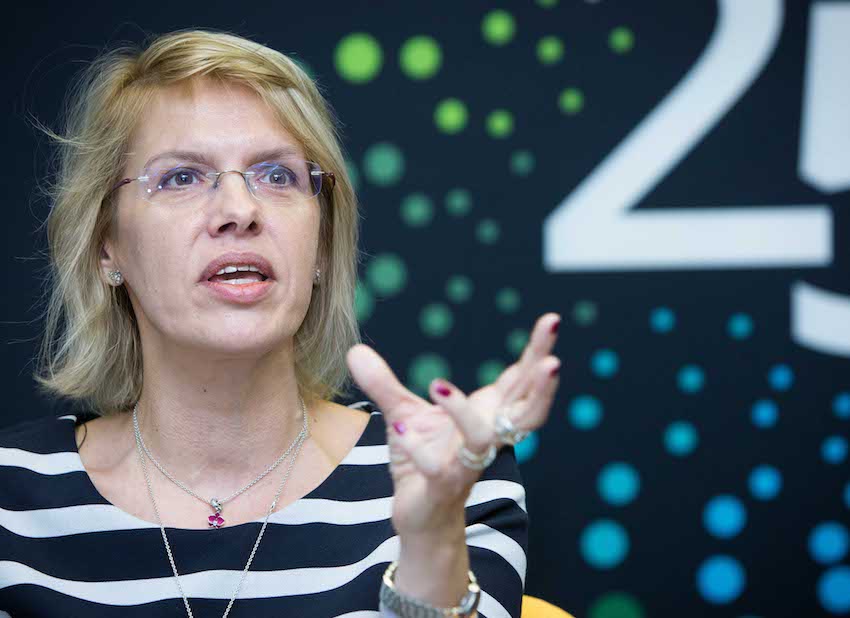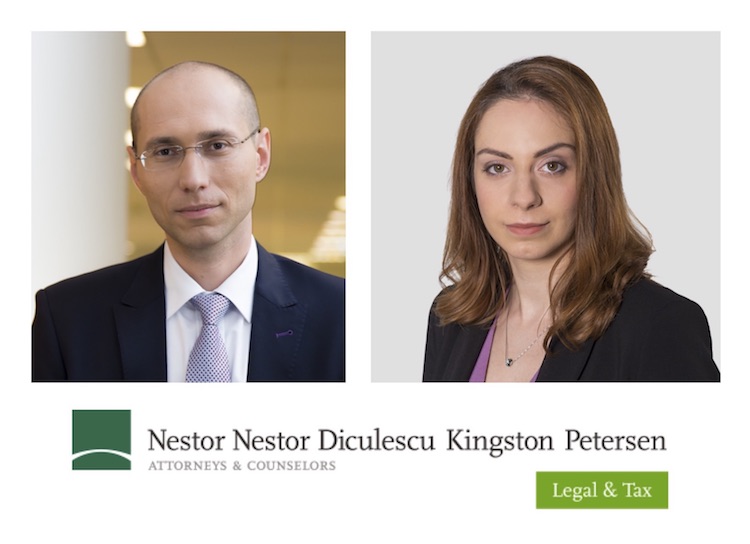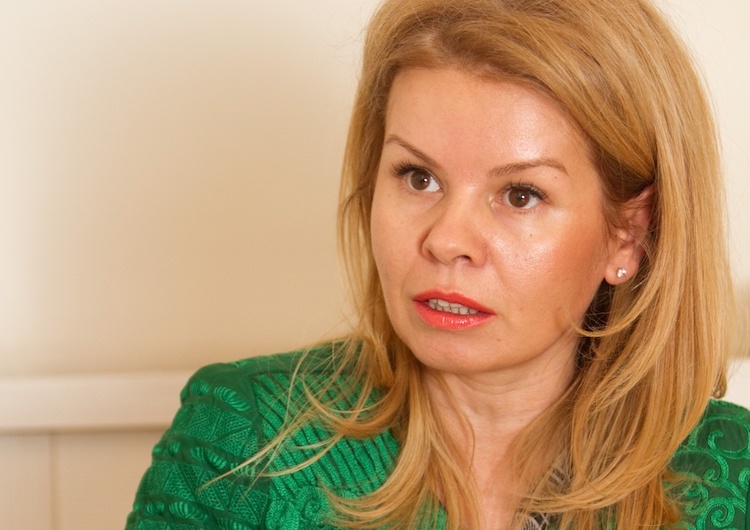M&A in Romania - moderate optimism and low appetite

Higher values on the M&A market in 2012/2013 should be regarded with moderate optimism, as the investors’ appetite for Romania continues to be low, analysts say. Whether the recent evolutions on the M&A market can be more than just smoke and mirrors depends on many factors, among them the existence of interesting projects.
The M&A market is like a mirror to the economy
Good news for the M&A sector translates into good news for the general economic climate. “The M&A market is like a mirror to the economy, as you cannot have a growing M&A market while generally speaking things are going badly,” says Stefan Damian, Deputy Managing Partner at Tuca Zbarcea and Associates.
However, the news was positive in 2012. The size of the M&A market more than doubled in terms of value in 2012 in comparison with 2011, with an estimated 106 percent increase based on disclosed deal values in the analyzed period, according to the M&A Barometer Romania 2012, published by Ernst & Young.
Despites these figures, optimism should be muted when considering the big picture. “If we look at the dynamics over the past few years, we will see that compared with the M&A peaks of 2007-2008, the market has been at around a seventh or maybe a tenth of the value of the boom market,” says Cristiana I. Stoica, Managing Partner at Stoica & Associates.
While some strong firms were acquired, the majority of target companies were those facing cash flow problems or insolvency, says Daniel Voicu, Managing Partner at Voicu & Filipescu. “Many deals continue to fail mainly due to different expectations on price; however, studies have shown that the total value of M&A deals doubled in 2012 compared to 2011, on a similar number of closed transactions. The market will probably continue to provide similar chances for low-price acquisitions this year too.”
The political turmoil of the second half of 2012 affected the market, and M&A activity slowed, with the number of transactions decreasing by 30 percent, according to the E&Y report. “However, some significant deals were made during this period, mostly in July and August 2012: the acquisition of eMAG by Naspers, two real estate deals (involving Liberty Center Mall and Tower Center International), the takeover of Astra Vagoane and the acquisition of a hypermarket from Pitesti by Auchan Romania,” read the E&Y report.2012 also witnessed the completion of the largest transaction in the last two years – the acquisition of chemical fertilizer producer Azomures by Ameropa Holding.
Real estate saw the largest deals, followed by retail & wholesale, manufacturing, food & beverages and energy & mining
“These five sectors cover 88 percent of the total aggregated disclosed value of USD 788 million,” added the E&Y report.
With the M&A market having picked up in 2012, the main questions on the lips of players are how the market looks in 2013 and what the future trends are.
“So far, 2013 looks better than the same period of 2012, meaning that sellers’ interest is clearly greater, either out of desperation, because business is starting to look worse, or simply because they feel it is a good time,” says Anda Rojanschi, Partner at D&B David si Baias. “This higher interest could lead to certain transactions, because the price could reach an acceptable level for the buyer.”
Whether the ball is in the court of the buyers or sellers is open to debate. Laurentiu Pachiu, Managing Partner at Pachiu & Associates, believes that the M&A market remains rather weak, because there is no innovation taking place that could persuade an investor to buy. “Eastern Europe is taken into consideration only if there is a big opportunity. Investors definitely prefer Asia,” he says.
The main factor that influences the M&A market is the existence of interesting projects for sale, says Sorin David, Managing Partner of D&B David si Baias. “There is money, there is interest. Romania has always been on the lists, but ultimately there are few projects, few industries that are attractive. And because there’s money, no one is looking to finance, at least by private equity, transactions of small values bellow EUR 7 million. Everyone wants to start from EUR 10 million.
Generally, the money doesn’t come from Romania; mainly we are talking about foreign investment funds. Basically, it all comes down to this: Romania has to offer interesting projects and this will attract the investors.”
Adds Anda Rojanschi, “There are some industries that are clearly attractive for M&A, such as food, transport, logistics and industrial production rather than services, with renewable energy still considered interesting.”
Most attractive sectors for acquisitions in 2013 are energy and natural resources, TMT, infrastructure and agriculture
Horea Popescu, Partner and Co-head of the Corporate Department at CMS Cameron Mckenna, says that the most attractive sectors for acquisitions in 2013 are energy and natural resources, TMT, infrastructure and agriculture. “There is still a lot of interest in energy, with an increase of interest in the oil & gas market.”
However, others argue that there has been little action on the M&A market in 2013 so far, in comparison to last year. “More deals took place in 2012 than in the previous years, but 2013 so far seems an exploration year, as nothing major has happened,” says Gelu Maravela, Managing Partner at Jinga Maravela & Asociatii. “Private equity was an important driver of the market during this difficult funding situation. In 2012, the business models slightly changed, new financing methods were found and some important transactions took place. Some interesting things may happen on this market, as there are some insolvencies which may attract investors.”
The year 2012 was possibly more prone to seeing transactions in the distressed assets sector, but there are good indications that traditional M&A transactions will once again return, says Cristian Lina, Managing Partner at Eversheds Lina & Guia.
Many believe that the distance between the expectations of sellers and buyers has significantly reduced, but has not completely disappeared.
“I think that at some point there was a big gap between the expectations of Romanian entrepreneurs and those who wanted to buy; now the gap has shrunk, but I think that investors’ current appetite for Romania, compared to what was going on about three or four years ago, is relatively small,” says Stefan Damian. “The businesses that were not sustainable have entered bankruptcy or insolvency, and those who chose not to sell for a little now can’t sell at all. It’s a sort of a blockage. If things improve at a general level, M&A will gain momentum and find its pace. I think this year will be slightly better than last year.”
Even if the gaps are no longer as large, there still are discrepancies between supply and demand, says Ovidiu Valeanu, Partner at Gilescu Valeanu Nathanzon & Partenerii CHSH. “Generally speaking, Romanian entrepreneurs have begun to be more realistic, aside from in the renewable energy sector; they have begun to realize that if you really want to sell your business, or to attract a partner, you have to adjust the price. The M&A deals that I’ve seen are partnerships in which local entrepreneurs, having realized that they cannot develop their businesses on their own, try to attract partners and usually sell majority shares, of more than 50 percent, 60 percent, while the Romanian partner keeps a comfortable share to motivate him/her.”
However, some consider that the expectations of the sellers remain unrealistic. “Many of the current M&A projects are flawed in terms of structure, evaluation, unrealistic expectations of the sellers, strategic investment,” says Anca Danilescu, Senior Partner at Zamfirescu Racoti & Partners. “However, there is still hope for opportunities in this sector, by which I mean, for example, the sale of valuable assets (exit of investment funds), the wave of Indian and Chinese investors who seek to identify entry platforms into the European Union.”
Private companies with foreign capital - most active M&A players
The main actors on the M&A market are private companies with foreign capital, as the investment funds are fairly reluctant. The exceptions are the traditional ones, such as the Investment Fund Broadhurst and Fondul Proprietatea, which are interested in various stakes, adds Valeanu.
Buyers are more careful now, as we no longer have a seller’s market, but a buyer’s market, says Anda Todor, Managing Partner at Dentons Bucharest. “Generally negotiations now take longer, as people try to cover all risks. The sectors that still work and are the driver of this economy are: energy, agriculture and pharma/healthcare.”
The value of M&A deals has greatly reduced since the economic boom years. “Seeing a number of M&A deals going through in 2012, we can say that there is no pattern in terms of investor profile or price setting,” says Alina Radu, Partner at Nestor Nestor Diculescu Kingston Petersen. “The average value has not significantly changed since 2011. There still appears to be a market of small and medium-size deals. However, transactions have been much more challenging, requiring more innovative and practical solutions to a variety of issues..”
“The price variations are rather big, but the average value doesn’t exceed tens of millions of EUR. This is very low for a country of our size, which has a much higher potential,” says Stefan Damian.
Horea Popescu, Partner and Co-head of Corporate and Head of Competition in Romania at CMS Cameron Mckenna, talks about the huge disparities between the prices that business sold for during the boom years and the prices paid now. “During the boom years we assisted buyers in the acquisition of companies in Romania, which were then later re-sold – and again and again we have seen a significant drop from the original investment price to the divestment price. That is just the reality of today’s market.”
On the M&A market the state remains the main actor, involved in the biggest deals, such as the privatizations of state-owned companies or insolvencies, says Gabriel Biris of Biris Goran. “As for the private sector, we cannot speak of effervescence, but rather of investments made by certain market players to strengthen their position. The foreign investors are interested only in distressed assets sold at heavily discounted prices.” As for distressed deals and the possibility to trade loan portfolios, there are currently specific limitations under Romanian law which may be seen as genuine legal barriers to the permeation of additional liquidity via the secondary trading market for non-governmental debt, says Cristiana I. Stoica. “For instance, Law no. 93/2009 on non-banking financial institutions drastically limits the trading of non-governmental financial loan portfolios. With the exception of financial assets reported as losses, or for securitization purposes, loan portfolios may only be traded with a limited range of organizations, i.e. basically credit and financial institutions.
Under such circumstances, the possibility that additional liquidity be injected, particularly into the corporate loan market, by a number of organizations which are specialized in debt trading and have an increased risk appetite in this area (such as investment firms or hedge funds) is greatly reduced, thereby inhibiting the reduction in market exposure of credit and financial institutions and the release of some of their capital for new lending.”
this article appeared in the 2013 edition of Which Lawyer in Romania
www.whichlawyer.ro






